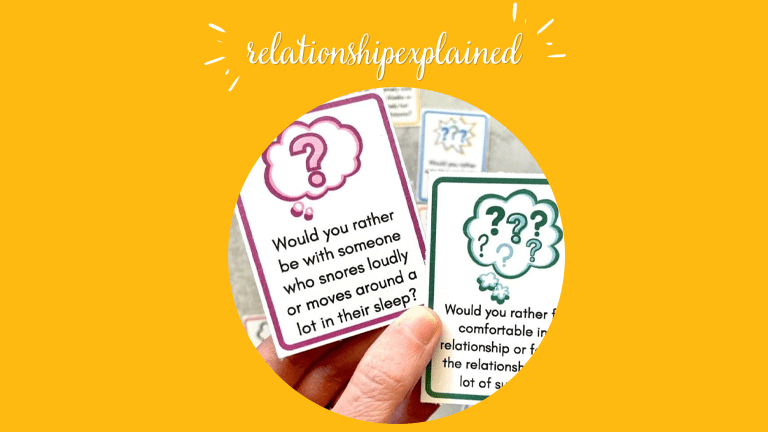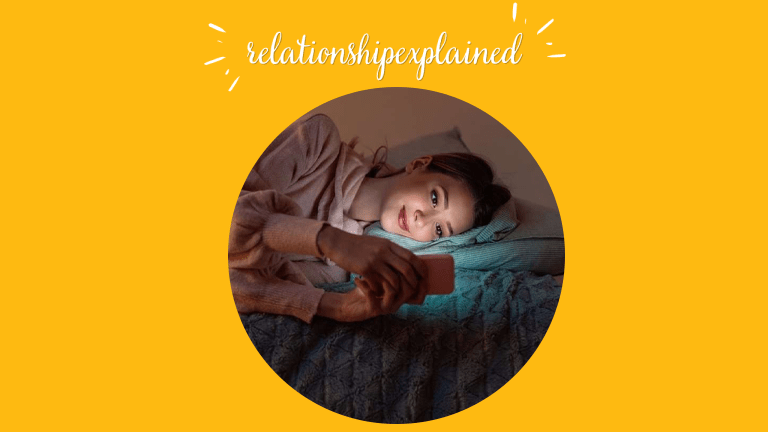Can Two BPD Have Relationship?
In a romantic relationship between two individuals with Borderline Personality Disorder, open communication, shared coping strategies, and self-care foster a unique bond that defies challenges. BPD can become a catalyst for deep connection, mutual healing, and an empowering journey toward emotional liberation.
Diving into the world of healthy relationships is always a curious adventure, but what if we throw a twist into the mix?
What happens when both folks involved are dealing with Borderline Personality Disorder (BPD)? BPD, famous for its emotional rollercoasters and relationship hurdles, adds a whole new layer of intrigue.
Can these two souls find common interests, get each other's quirks, and be each other's support squad? Join us as we jump right into the whirlpool of what happens when two BPD buddies decide to take the plunge together.
10 Reasons Why Two BPDs Can Have A Romantic Relationship
When it comes to romantic relationships, the world often offers a plethora of advice, especially when dealing with personality disorders like BPD.
While it's true that BPD can present challenges in interpersonal dynamics, individuals can form meaningful and successful relationships in spite of the challenges. Here are ten compelling reasons why:
1. Empathy And Understanding
Two people who share the experience of BPD not only create an environment of profound empathy and understanding but also forge a unique emotional resonance.
They possess an innate ability to grasp the tumultuous intensity of emotions, the rollercoaster of constant changes in mood, and the intense fear that often accompanies BPD. This shared understanding forms the bedrock of a deep and extraordinary connection, allowing them to traverse the intricacies of their individual struggles together.
Through this mutual recognition, they cultivate a relationship where each partner's emotions are not only acknowledged but also genuinely felt, nurturing a bond that transcends words and ordinary comprehension.
2. Validation And Acceptance
In a relationship where both partners have BPD and impulsive behaviors, an inherent sense of validation and acceptance flourishes. Their shared understanding allows for a profound validation of each other's feelings and experiences, creating a safe haven where the often isolating effects of BPD are diminished.
This mutual validation becomes a powerful antidote to the pervasive self-harm that BPD can bring, replacing it with comforting assurance. Consequently, it makes the partners feel that their emotions and struggles are recognized and affirmed by someone who truly comprehends the intricacies of their inner world.
3. Mutual Support
The unique challenges posed by BPD can be better navigated when partners are not only on the same wavelength but also familiar with its emotional intricacies.
This shared understanding enables them to offer each other genuine support, forging a powerful alliance in managing the rollercoaster of emotional turmoil and crisis that often arise. Their empathy becomes a guiding light, illuminating the path toward healing and stability as they stand shoulder-to-shoulder in the face of challenges that might otherwise be isolating.
Together, they create a sanctuary where vulnerability is embraced, and the healing journey is undertaken with unwavering companionship.
4. Breaking Down Stigma
A relationship between two individuals with Borderline Personality Disorder challenges the stigma associated with the disorder in a powerful and transformative way.
Their ability to forge a genuine and profound connection showcases that BPD doesn't solely define a person's capacity for idealized love, empathy, and stability. By openly sharing their experiences and demonstrating the resilience they've cultivated together, they break down the barriers of misunderstanding that often shroud personality disorders.
Through their unwavering commitment to each other and their relationship's growth, they pave the path for a more compassionate and enlightened perspective on BPD and mental well-being as a whole.
5. Growth And Healing Together
Both partners can embark on an intimate and transformative journey of growth and healing hand in hand. United by their shared experiences, they possess a rare opportunity to navigate the tumultuous waters of their condition while serving as beacons of strength for one another.
As they confront challenges that may arise, each obstacle becomes a stepping stone toward personal development, catalyzing a continuous cycle of encouragement and inspiration. Through their unwavering support, they pave the way for profound self-discovery, fostering an environment where the pursuit of emotional well-being becomes a shared, empowering aspiration.
6. Enhanced Communication Skills
Navigating a relationship with Borderline Personality Disorder demands more than the usual dose of effective communication.
In this context, the presence of two BPD sufferers can actually lead to the cultivation of remarkable communication skills. As they traverse the labyrinth of their emotions, both partners gradually become adept at articulating their feelings, demarcating personal boundaries, and voicing their needs with newfound clarity.
This shared journey hones their ability to convey intricate nuances of their inner worlds, fostering a profound connection built on vulnerability, trust, and the art of truly being heard.
7. Skill Sharing
The partnership between two borderlines opens a gateway to a treasure trove of coping strategies and techniques.
Each partner's unique journey through BPD may have unveiled distinct methods for managing emotional turbulence and maintaining equilibrium. By openly exchanging these approaches, they not only enrich each other's coping toolbox but also cultivate an environment of experimentation and growth.
This sharing of personalized tools serves as a reservoir of resources to navigate challenges, empowering both partners to collaboratively create a resilient foundation for their relationship's success.
8. Deep Intimacy
Most people with BPD often have an intense desire for emotional intimacy with their favorite person. Someone with BPD can experience profound emotional connections, fostering a level of intimacy that is extremely difficult to replicate in other healthy relationships.
9. Coping Mechanism Alignment
While certain symptoms of BPD, like depression, anger, and anxiety, can vary, certain coping mechanisms may resonate more strongly with both partners. This alignment can create a supportive environment where strategies are implemented in unison.
10. Redefined Relationship Norms
Rather than adhering to conventional relationship norms, two people with BPD have the opportunity to redefine what a romantic partnership looks like. This can lead to a unique and fulfilling bond that transcends societal expectations.
Tips On How Two BPDs Can Sustain A Romantic Relationship
Navigating romantic relationships can be a tumultuous journey, especially for people with BPD.
While BPD presents its own set of challenges, it's entirely possible for a borderline person to forge a deep and lasting connection with another. With a combination of self-awareness, effective communication, and mutual support, a romantic relationship between two BPD-diagnosed individuals can thrive.
Here are ten helpful steps that a person with BPD may practice with their significant other.
1. Prioritize Self-Awareness
A robust and enduring romantic relationship between two individuals with Borderline Personality Disorder hinges on the bedrock of self-awareness.
Devoting time and effort to comprehending one's distinct BPD symptoms, recognizing personal triggers that evoke intense episodes, and deciphering the intricate landscape of one's emotional reactions are vital pursuits. This self-exploration not only enhances each partner's grasp of their inner world but also provides a compass for steering clear of potential conflicts.
Armed with this self-knowledge, they can engage in conversations with a profound understanding of themselves and each other.
2. Open And Honest Communication
For two individuals with Borderline Personality Disorder (BPD), clear and transparent communication becomes an indispensable lifeline that weaves their emotional worlds together.
This elevated significance arises from the shared understanding of the intricate emotional landscapes they navigate. By fearlessly revealing their feelings, concerns, and needs, a profound atmosphere of trust takes root, providing a sturdy foundation where doubts and misinterpretations dwindle.
In this open exchange, unspoken tensions are replaced with shared vulnerability, forging an unbreakable connection. The act of candid communication transcends mere words; it becomes a beacon guiding them through the complexities of BPD, fostering empathy and an exceptionally caring environment.
3. Establish Boundaries
Setting and maintaining healthy boundaries within intense relationships between individuals with Borderline Personality Disorder is like crafting a safety net for emotional well-being.
By collaboratively outlining what feels comfortable and respectful for each person, these boundaries create a reassuring framework. They act as steadfast guides through the unpredictable terrain of BPD-related emotions, offering a stable anchor amid potential storms.
In this shared effort, boundaries not only minimize anxiety and triggers but also cultivate an atmosphere of understanding and support. Through these mutually agreed-upon limits, both partners can confidently explore the depths of their connection while nurturing their own emotional equilibrium.
4. Practice Active Listening
Truly grasping the essence of effective communication lies in the art of active listening. It's more than just hearing words; it's about immersing oneself in the speaker's world, offering undivided attention, and acknowledging emotions that underscore their words.
This involves not only absorbing the spoken content but also deciphering the unspoken nuances, like the tone, pauses, and nonverbal cues. By asking clarifying questions, partners can bridge any gaps in understanding, ensuring that messages are received as intended. Most importantly, active listening is a powerful conduit for empathy – stepping into each other's emotional shoes and sharing the weight of experiences.
This profound connection safeguards against misinterpretations and fosters a harmonious exchange of thoughts and feelings.
5. Cultivate Emotional Regulation Techniques
The rollercoaster of intense emotions in BPD can be navigated more smoothly through collaborative skill-sharing. Each romantic partner can offer a unique arsenal of emotional regulation techniques acquired through personal experiences and coping strategies.
Mindfulness, the art of staying present, deep breathing to restore calm, and grounding exercises to anchor in reality are just a few methods that can be exchanged. By collectively exploring and fine-tuning these techniques, they create a personalized toolkit for weathering emotional storms together.
This shared endeavor not only fortifies their emotional resilience but also fosters a sense of unity as they actively work together to find solace amidst the tempest of emotions.
6. Seek Professional Support
Engaging in individual and couples therapy stands as a cornerstone in fortifying a successful relationship between two individuals with Borderline Personality Disorder.
A mental health professional skilled in BPD intricacies and knowledge of the Diagnostic and Statistical Manual of Mental Illness can offer a safe space for exploring the illness. Individually, therapy aids in personal growth and equips partners with tools to manage their own suicidal thoughts and BPD symptoms.
Seeking professional support through couples therapy, on the other hand, facilitates open dialogues, teaches active listening, and imparts techniques for navigating rough patches together. The therapist's professional help becomes a compass steering the relationship toward a more harmonious course, enhancing emotional well-being and solidifying the foundation of their love.
7. Celebrate Small Wins
BPD's propensity to magnify challenges and setbacks underscores the importance of actively counteracting this inclination. Amidst the intense love-hate relationship, impulsive behavior, suicidal ideation, and destructive self-image, consciously celebrating even the smallest triumphs and positive moments become a potent antidote.
Embracing these victories, no matter how modest, serves as a reminder of resilience and growth. This deliberate shift in focus nurtures a newfound sense of progress, infuses the healthy relationship with positivity, and bolsters both partners' ability to weather the storms together.
In this way, the act of celebrating minor achievements becomes an empowering ritual that contributes to the relationship's overall emotional well-being and fortitude.
8. Give Space When Needed
Acknowledging the importance of personal space within the context of a romantic relationship between two people with BPD is crucial.
Recognizing that both partners may require moments of solitude to recharge and regain emotional balance showcases a profound understanding of the unique challenges posed by BPD. By honoring each other's need for space, a compassionate atmosphere is fostered, promoting emotional well-being and preventing the potential exhaustion that can arise from constant emotional engagement.
This intentional allowance for individual retreats fortifies the relationship's foundation, ensuring that both partners have the resilience and energy to navigate their shared journey.
9. Practice Forgiveness And Patience
BPD-related challenges may lead to conflicts or misunderstandings. Cultivating a forgiving and patient attitude towards each other allows room for growth and helps prevent lingering resentments.
10. Focus On Shared Goals And Activities
Engaging in shared interests and goals can create positive experiences that strengthen the relationship. It offers a sense of companionship, teamwork, and mutual accomplishment beyond the scope of BPD-related struggles.
After all, there is no need for frantic efforts to salvage a relationship if a kindred spirit continues to provide their support unconditionally.
Final Words
In the intricate dance of a romantic relationship between two individuals with Borderline Personality Disorder (BPD), mutual understanding, resilience, and growth become the guiding stars.
BPD can make a relationship difficult, but through unwavering communication, shared coping strategies, and a commitment to self-care, these couples can transcend the challenges. Embracing the unique dynamics of their healthy bonds, they have the potential to craft a love story that defies expectations, where BPD is not an impediment. Instead, it serves as a catalyst for profound connection and mutual healing in long-term relationships.













